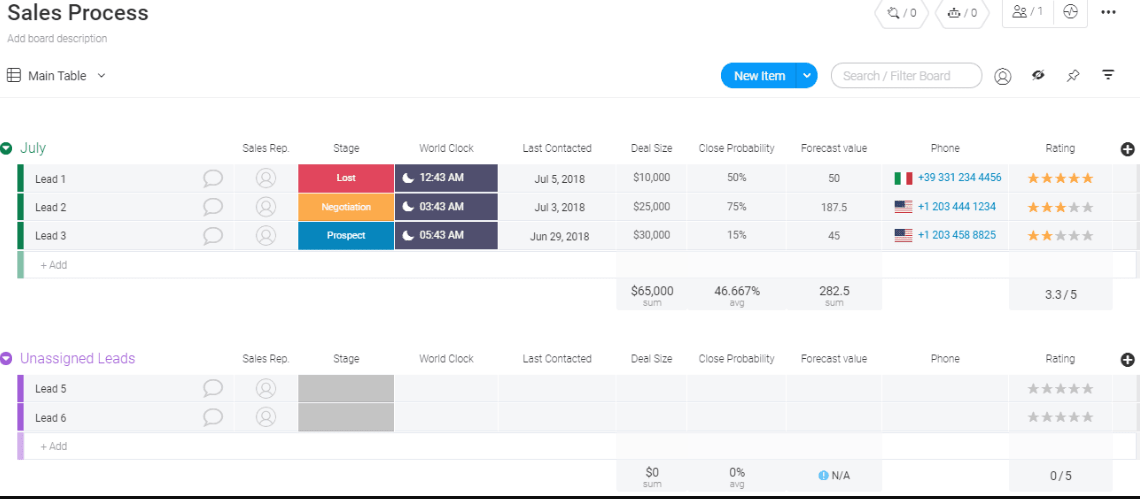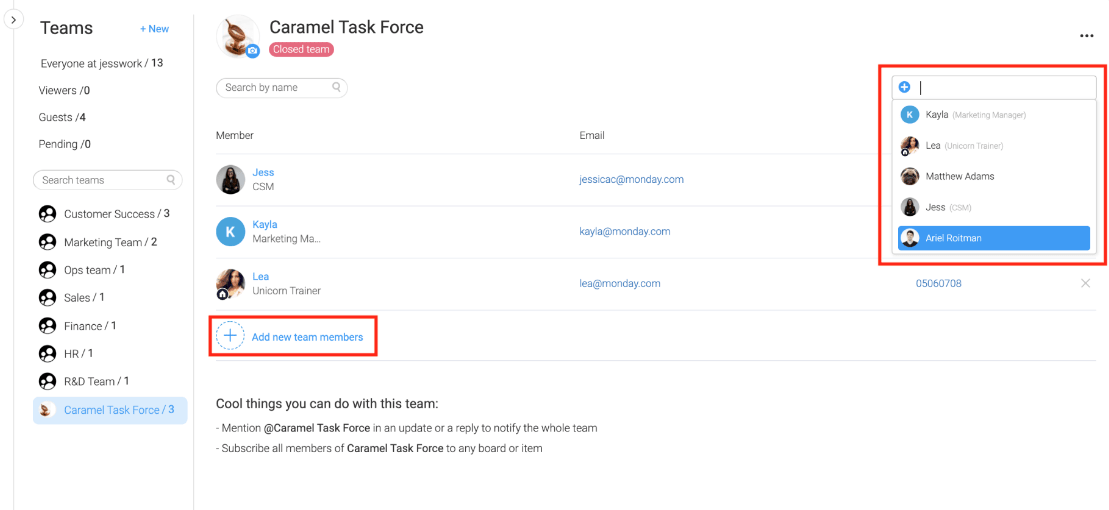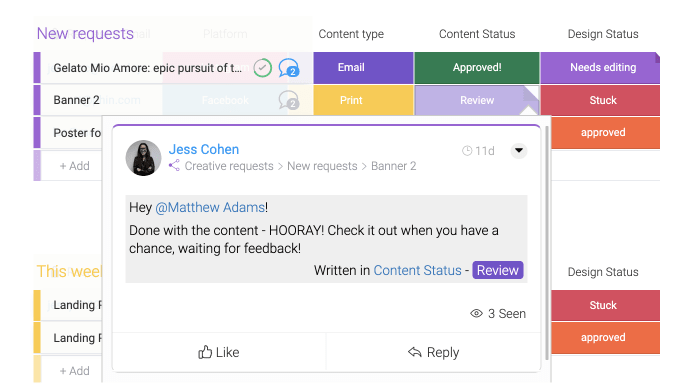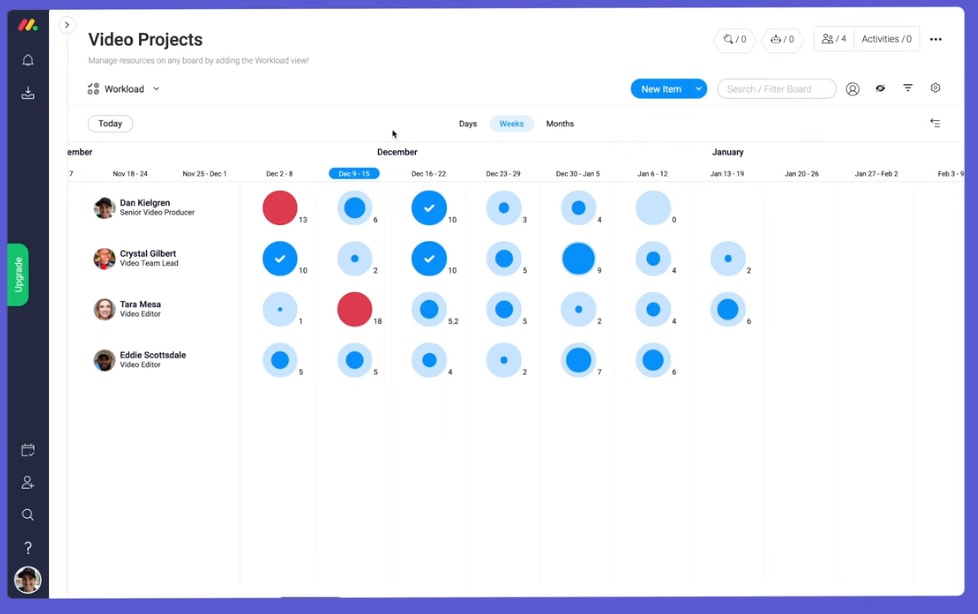Managing your own workload can be challenging at the best of times, managing a whole team’s workload doubly so.
Staff with too much on their plate can crack under pressure, and those underused in the team can feel unappreciated.
So what? As long as you deliver the project on time, does it really matter?
In a word, yes.
An excessive workload is the chief source of workplace stress for 39% of respondents to a 2019 ComPsych survey. And the American Institute of Stress estimates that workplace stress costs businesses $300 billion annually.
Workload allocation is important.
Fortunately, some strategies and frameworks can help you to manage your team’s workload better. They’re not hard to do, and — when you get them right — you have a less stressed, happier team with higher productivity and delivering work on time.
This article covers all you need to start implementing intelligent workload management ― what it is, why it’s essential, and how you can use monday.com as a workload management platform to manage your team’s workload.
What is workload management?
Workload management is more than merely ‘managing your workload.’ Everyone does that to a certain extent by prioritizing their daily tasks and getting organized.
Formal workload management is a rational approach to workload distribution between project team members to boost productivity.
Workload management is all about:
- Understanding the precise list of jobs in your queue that need doing
- Understanding your team’s capability and capacity ― the actual workload they can handle
- Distributing outstanding tasks as efficiently as possible using a workload management system
The result should be your team’s work is completed on schedule without putting staff at risk of burnout.
Why’s workload management important?
As a project manager, the smooth running of your team’s work is your responsibility. The signs that your team isn’t working as effectively as it can include:
- Employees are visibly stressed and taking more sick days
- Conflict happens between team members as they bicker about who’s doing what
- You have a higher turnover of team members than usual
- Your project runs over deadlines and budget
A 2020 study found that a worker’s mere perception of their workload compared to other team members influences their overall job satisfaction.
It doesn’t matter whether their perception is correct or not. If a worker feels they’re shouldering the lion’s share of the work, it can be a source of conflict and manifest in job dissatisfaction.But when you apply a workload management strategy, you solve these problems.
We spend around a third of our lives at work. So shouldn’t we try to make it a happier time for everyone involved?
Plus, it’s actually fairly simple to do. First, understand your full work scope and your team’s capabilities. Then allocate work fairly, keeping lines of communication open to track progress as work moves along.
4 steps for team workload management
To recap, workload management seeks efficient resource allocation to ensure a balanced workload across a team. Here are 4 uncomplicated steps you can take to meet this goal every time.
#1. List your tasks to understand the scope of your workload
You can’t begin to organize your team’s current workload unless you understand precisely the work you need to do, right?
So the first step in workload management is to write in detail all of the work that your team needs to do to deliver your project. You need to account for everything.
Don’t just include the project action items — your team will also need time to process emails and other general admin duties.
Next, estimate the amount of time each project task will take ― a critical aspect of workload management, as we’ll see later.
When you have your list of jobs, organize them in a formal system (monday.com works well!)

You can use the organizational features of monday.com to get a firm grip on your task management. It’s easy to prioritize and assign ownership. Plus, you can enter estimated task durations using the timeline column.
#2. Understand your team’s workload capacity
If you want your cycling team to win the Tour De France, you don’t attempt it with a team full of star riders. You’ll have a couple who could win it, sure, but you’ll also need riders with other skills.
You’ll want ones who are good at sprinting, some that ride the mountain stages well, and some junior riders who carry water and food from the team car to the stars.
Your project team should be just like this ― you need a variety of workers whose individual strengths fit all the demands and requirements of your project.
But it’s not just about their skills. You also need to understand their availability to help with capacity planning. Maybe some work part-time, work on multiple projects, or are required for other tasks. That’s important information when thinking about allocating workload.
You can organize project teams easily with monday.com. Select the staff you need for your next project from the list of registered users, and assign them a team name.
Once you’re set, you can easily communicate, notify, and add the whole team to project boards.

#3. Prioritize and allocate your workload
This step is where you begin to really get organized by assigning your workload out to the team. It’s also the stage where you should give each action item more careful thought.
Be strategic about allocating work to your team members. Aim to do the high-priority tasks first, which are the ones that move your project forward the most.
Also, be aware of any dependencies so that your team tackles action items in the right order.
When it comes to distributing work, consider how co-workers value variety. No-one wants to do the same monotonous chore day after day, so make sure everyone has their fair share of less glamorous jobs.
Avoid allocating work using a simple count-up of tasks. Spread work between team members with an eye on the estimated task duration instead. Key an eye on progress and resolve bottlenecks quickly.
As your project progresses, revisit this step to re-evaluate tasks. Are some no longer required? Do you need to add new ones? Your plans should be flexible to meet changing needs of the project.
If you struggle with prioritization and assigning work ownership, here’s a deep dive into some useful techniques.
#4. Communicate and recalibrate as work progresses
Now that your project is up and running, it’s time to nurture it along like your favorite potted plant.
Do this with constant communication and recalibration on the tasks you’ve assigned out to team members.
26% of respondents to the PMI 2020 Survey claimed that inadequate/poor communication contributed to project failure.
And with the new remote reality brought on by the COVID pandemic, there’s an increased likelihood you won’t have as much communication with your team.
Look for signs that a co-worker may be struggling. Missed deadlines or sloppy work are often a sign, so check-in regularly and try to instill a sense of belonging. Communication is a two-way street, too, so provide an avenue for feedback and consider regular one-to-ones.
monday.com provides a place for your team to communicate and collaborate on the small details of tasks. Plus, you can keep files and other information in one place, so everyone has what they need to see the job through to completion.

Now let’s take a look at how you can put these 4 steps together easily using monday.com.
How to do workload management right using monday.com
monday.com is an operating system (OS) for the way you work, and you can use it as a workload management tool in any of your monday.com project boards.
In fact, we’ve designed an amazing board view that makes checking team workload super simple.
There are ideally 3 columns you need to calculate team workload:
- One for people — this is the same as the one used to assign task ownership
- A timeline or date column to define the time frame of a task
- A number column that shows expected task duration (optional)
As long as you have these in place, you can add the workload management view to any board using the views menu.
There are 2 ways to calculate the workload for your team. The first is on a simple count of tasks, and the 2nd, more accurate method is by using an effort metric. The effort metric is pulled from the estimated task duration in the number column.
Enter worker capacity for each person in your team as a number of hours. The workload view calculates individual workloads as a breakdown of assigned work against capacity hours. It’s then visually displayed as circles within circles.

The light blue circle represents total individual user capacity. The darker blue circle within shows the current level of work allocated.
In an ideal world, everyone will have a perfect dark blue circle with a checkmark in it. But life isn’t like that, and those underutilized will have a lighter outer band ― those overburdened will have a red circle.
For those with a heavy workload, click into their circle to view their to-do list and make changes to reallocate their work.
Once you start using the workload feature, you’ll wonder how you managed without it. You can keep a constant eye on team workload by adding a special workload widget to your digital dashboard.
Effective workload management means a happier team
Missed deadlines, budget overruns, and an unhappy team can happen if you aren’t strategic about your resource management.
Stay on top of your work by understanding the full project scope, team skill sets, and the available work hours in the day.
Then keep track of the workload allocated to your team by employing the workload management view on monday.com.

